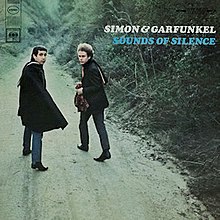
EDITORIAL NOTE: I began writing this last week, but got sidetracked and had almost forgotten about it. After hearing the sad news of Slayer guitarist/songwriter/cofounder Jeff Hanneman’s passing, I really felt the need to finish what I had started.
I grew up in the last days of dangerous music – when large numbers of adults were legitimately concerned that songs could corrupt their children to the point of destruction. My parents and their friends used to have conversations about the perils of this new genre of music that was becoming popular. “You know that band Kiss? Well their name is an abbreviation for ‘Knights in Satan’s Service.’ And AC/DC? That’s ‘After Christ, Devil Comes.’ I heard that Ozzy Osbourne fella performs an animal sacrifice to Satan at the end of every one of his shows. Judas Priest has a song with a coded message that makes kids kill themselves.”
These discussions confused my ten-year-old brain because I had heard songs by some of the groups they mentioned. Sure, those guys who sang Beth looked like dingy clowns, but their music had never made me feel afraid or worried. Since I couldn’t process this information, I filed it away and kept taking mental notes over the next few years.
…And there were lots of notes to take.
There were the kids a couple years older than me sifting through the cassettes in our local store and freaking themselves out with the “Holy Diver” cover art. “Dude, when you turn the Dio logo upside down and read it, it TOTALLY spells ‘devil.’” “Dude, put it down. Just put it down.”
There was my dad buying a record collection at a yard sale, discovering “The Number of the Beast” among the titles, and promptly smashing it to pieces with a hammer.
There were the countless stories on television about some teenager driven to desperate, lethal madness by heavy metal music, reported as though we mere mortals were helpless against its dark powers.
Fear was palpable in the airwaves, and it fascinated me – even then. Without any context, my mind imagined things far more horrible than the overblown, misrepresented realities that no one seemed to bother fact checking. Eventually, I would find myself seeking out those darker things in music.
But it began in middle school with Bradford Merville Blair. Brad transferred in to my school for reasons never fully explained or understood. He used to bite holes in soda cans; he had a monumentally absurd, filthy sense of humor and no recognition of any immediate need for authority figures. We were fast friends.
Brad lived out in the county and didn’t have cable. Instead, a huge fiberglass monstrosity of a satellite dish was planted in his yard. That thing picked up channels from all over, of every size and dimension imaginable.
One of the music channels played things way out of the safety of the MTV primetime box. There were all sorts of sounds I had never encountered before. The newness of them intrigued me, but one in particular took hold and wouldn’t let go. It was that thing I knew I had been missing, but had not yet found. I cannot remember what song it was, but I remember what happened next.
“You like the metal, huh?” Brad asked. I nodded, slack jawed. “Then you need to hear this.” Over the course of the next two hours, I inhaled every riff and every shrill wail of Metallica’s “Master of Puppets” (twice). Something had stirred deep inside me, and it was hungry… hungry like a man who didn’t even know the meaning of the word until just now because he had never truly eaten before.
But for all their snarling virtuosity and Lovecraftian subject matter, Metallica still creates very melodic, very accessible music (excepting “Saint Anger”). I think that’s part of why I latched onto it so quickly. While they did not lead me all the way to the dark place my soul was craving, they were a solid starting point. Metallica, like Iron Maiden, makes for a perfect gateway band into metal. I kept digging deeper and finding heavier things until I ultimately discovered Slayer’s “Reign in Blood.” To a thirteen year-old boy raised on top forty, it sounded like the death roll of the apocalypse.
The follow-up, “South of Heaven” (along with most of the Slayer catalogue), is also excellent, but it doesn’t come close to the sweat-soaked lunacy that is “Reign in Blood.” Truth is, very little can.
I tend to process music in terms of its extremes. When I think about punk, I think of hardcore. When I think about rap, I think of gangsta rap. When I think about heavy metal, I think of death metal – in particular, I think of Slayer. There is an upper limit for aggression and speed in guitar-driven music and Slayer found it thirty years ago. Others have matched it, but no one has ever surpassed it.
Play someone a Slayer song and it immediately either repulses or resonates. Very little music truly polarizes listeners in such a visceral way. It is violent, insistent and profane – not just in its lyrical content, but also in the noise it makes. Hanneman, King and company were the smiling composers of soundtracks for Darkness. There is something deeply fulfilling about their songs on a pagan level – something that nourishes the id. Slayer was the band my parents never knew they were afraid of; Slayer was the last of the dangerous music.


